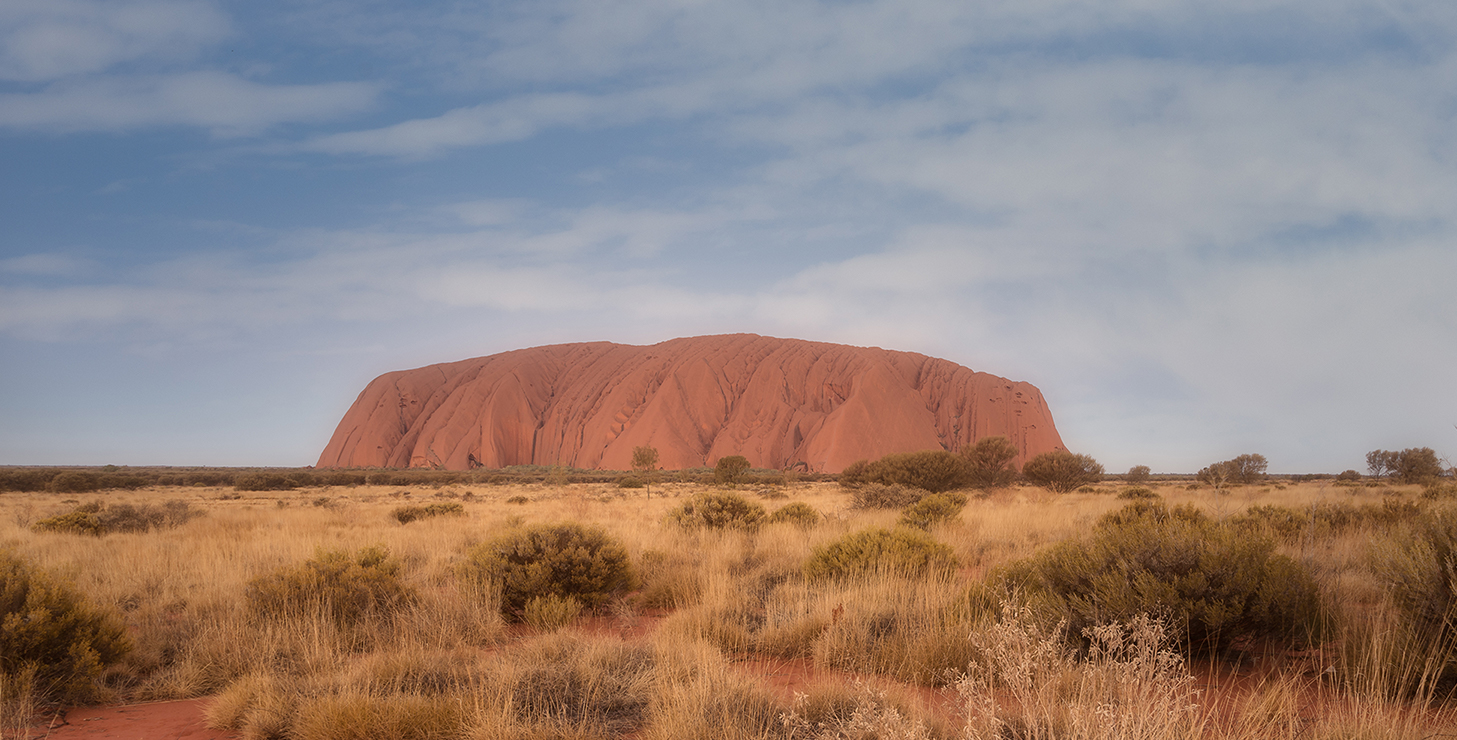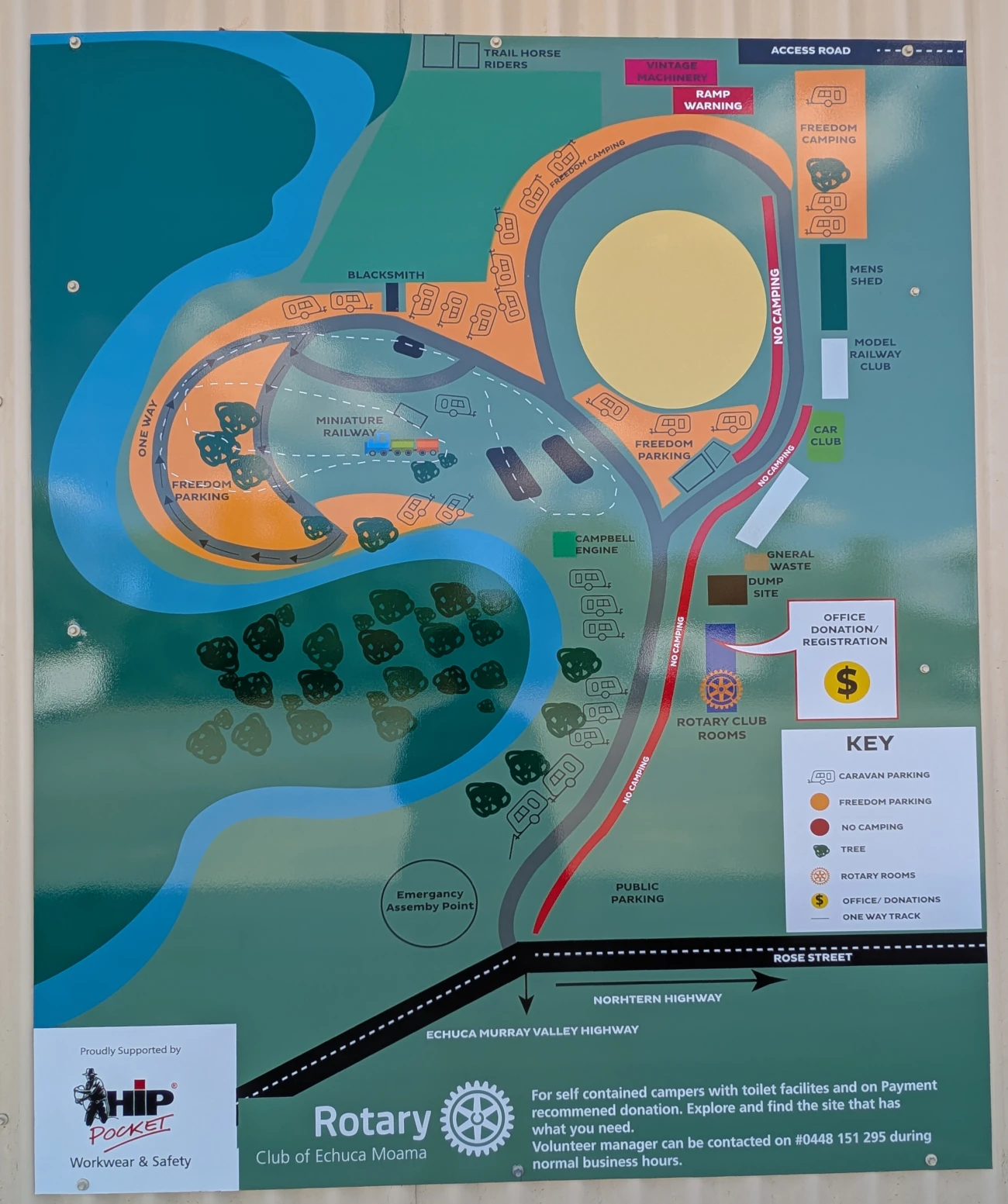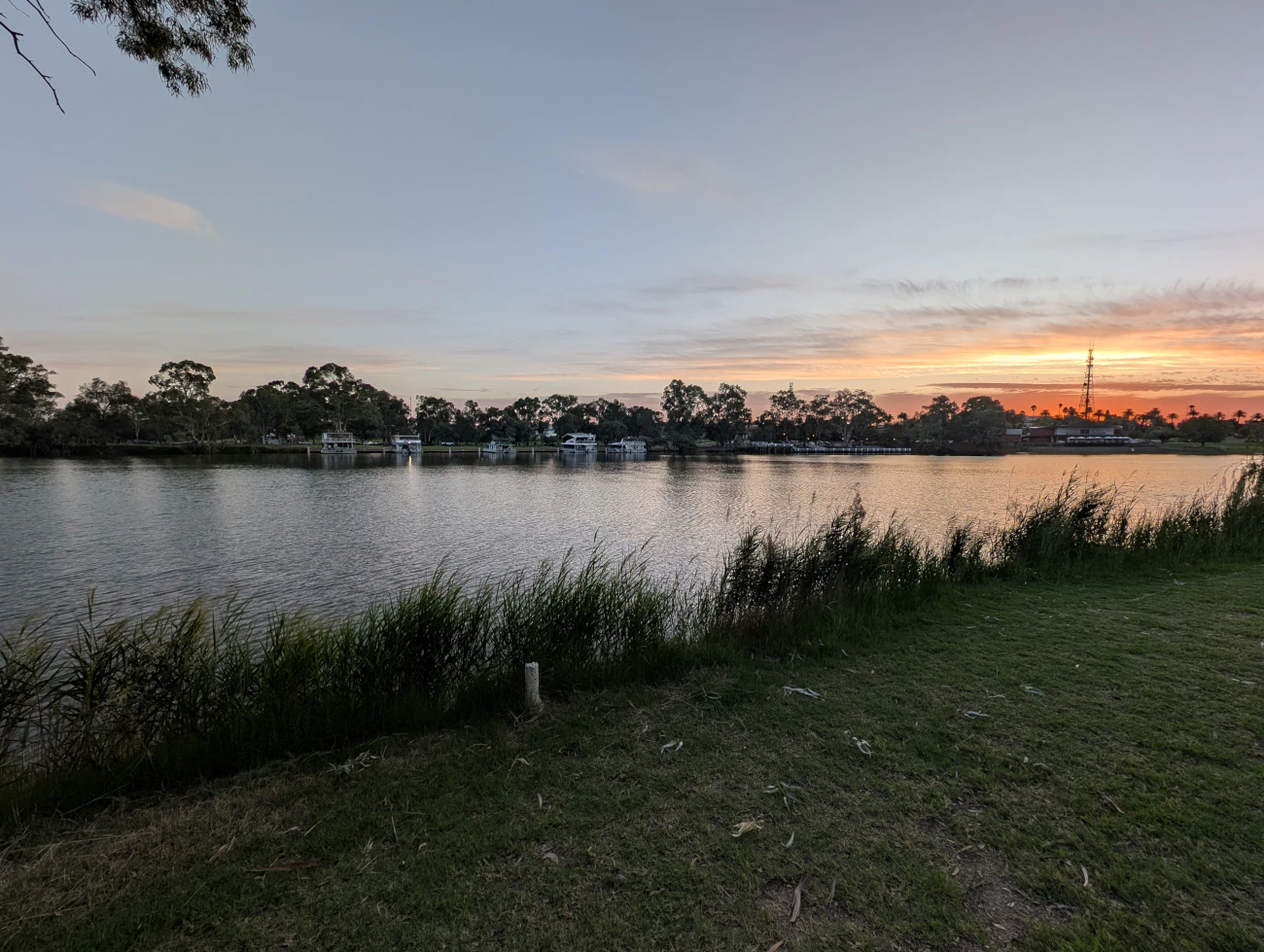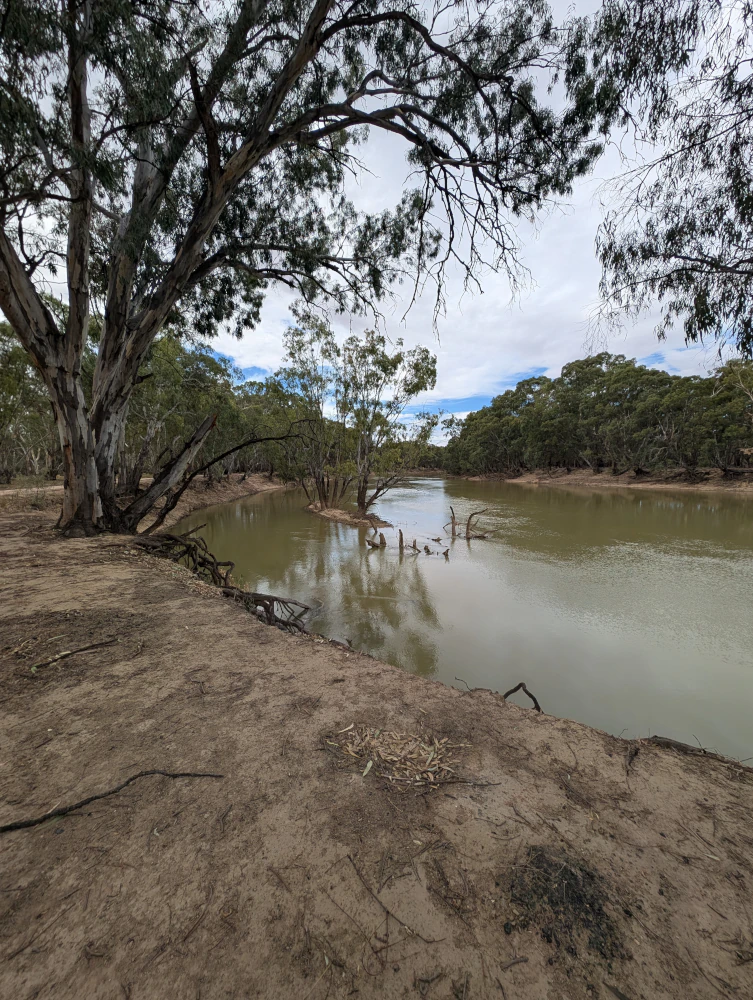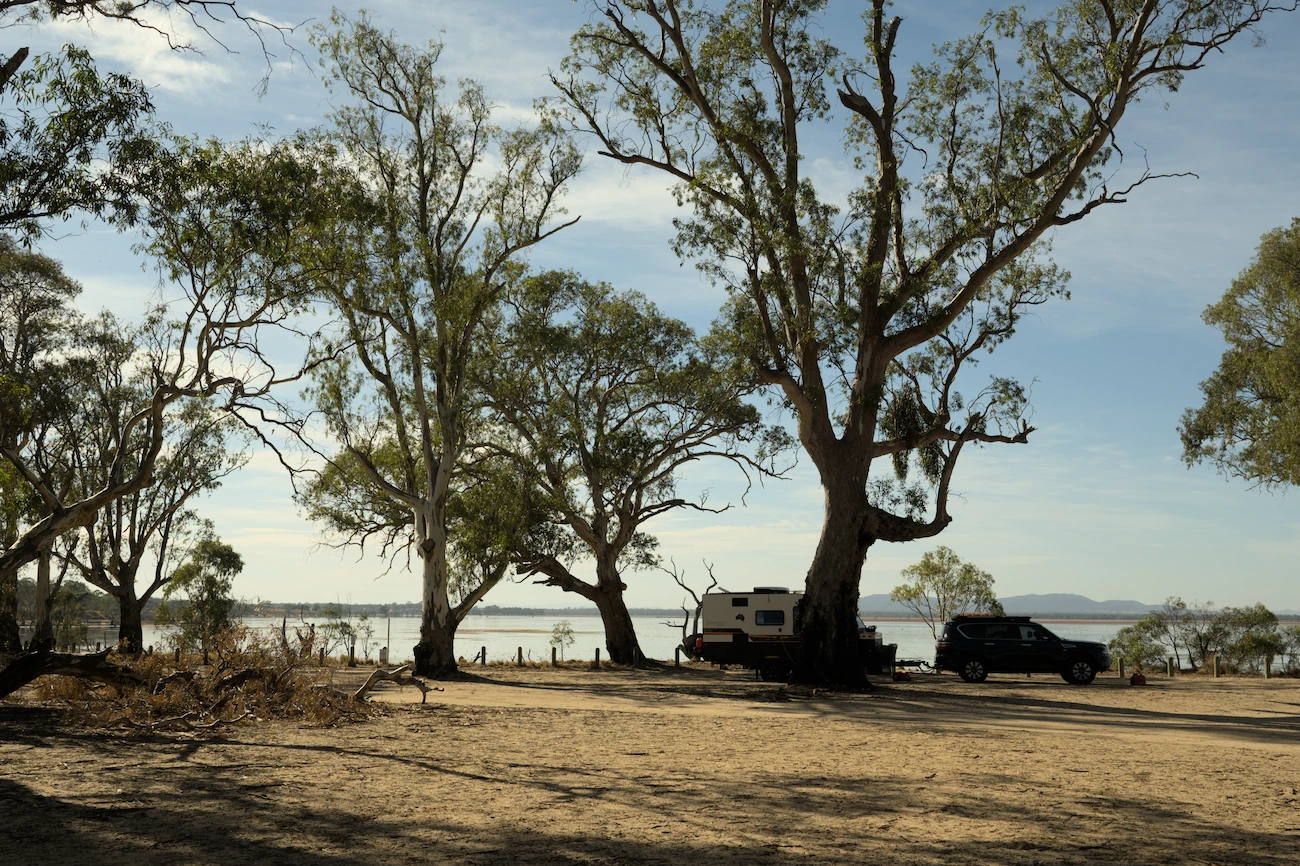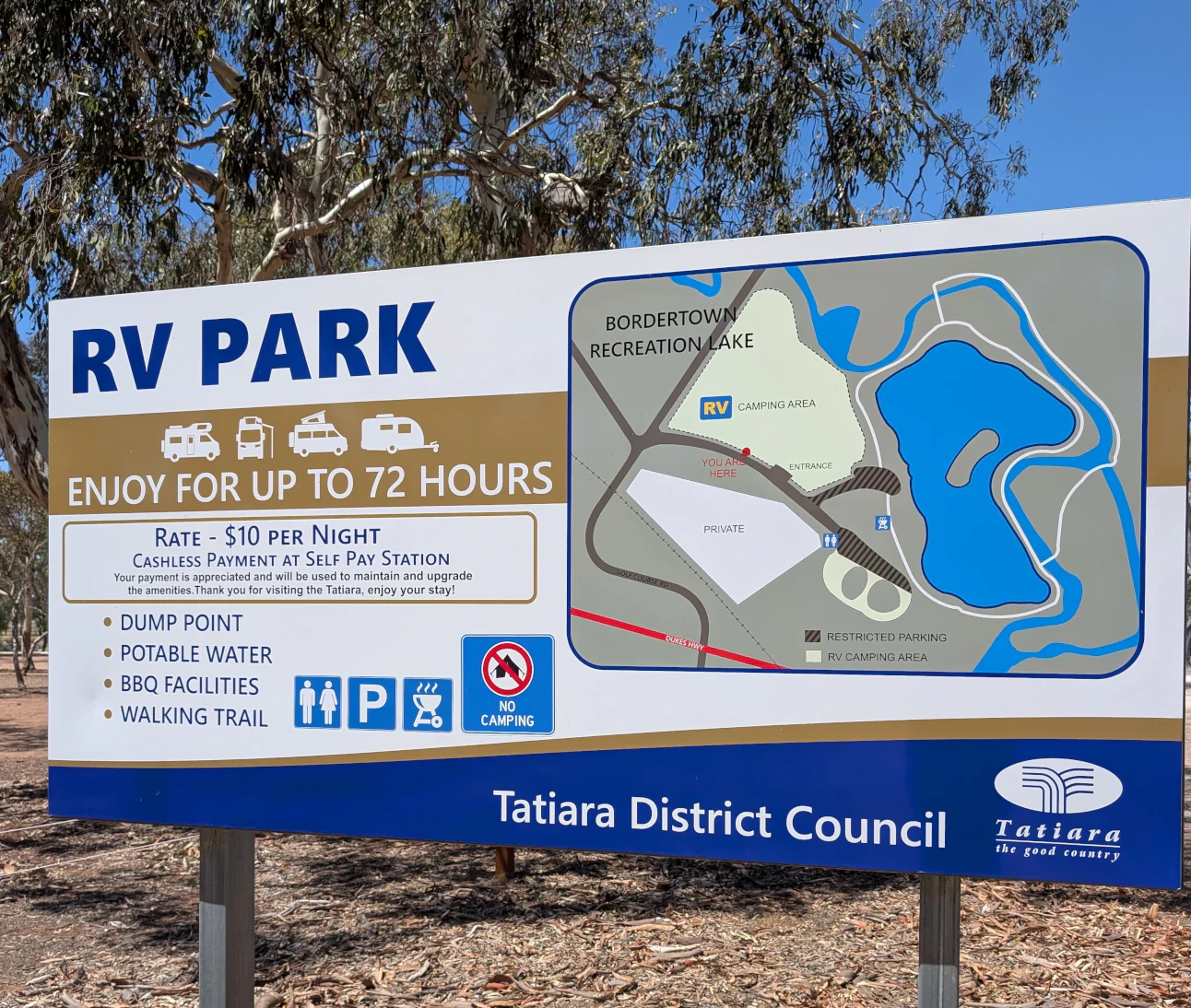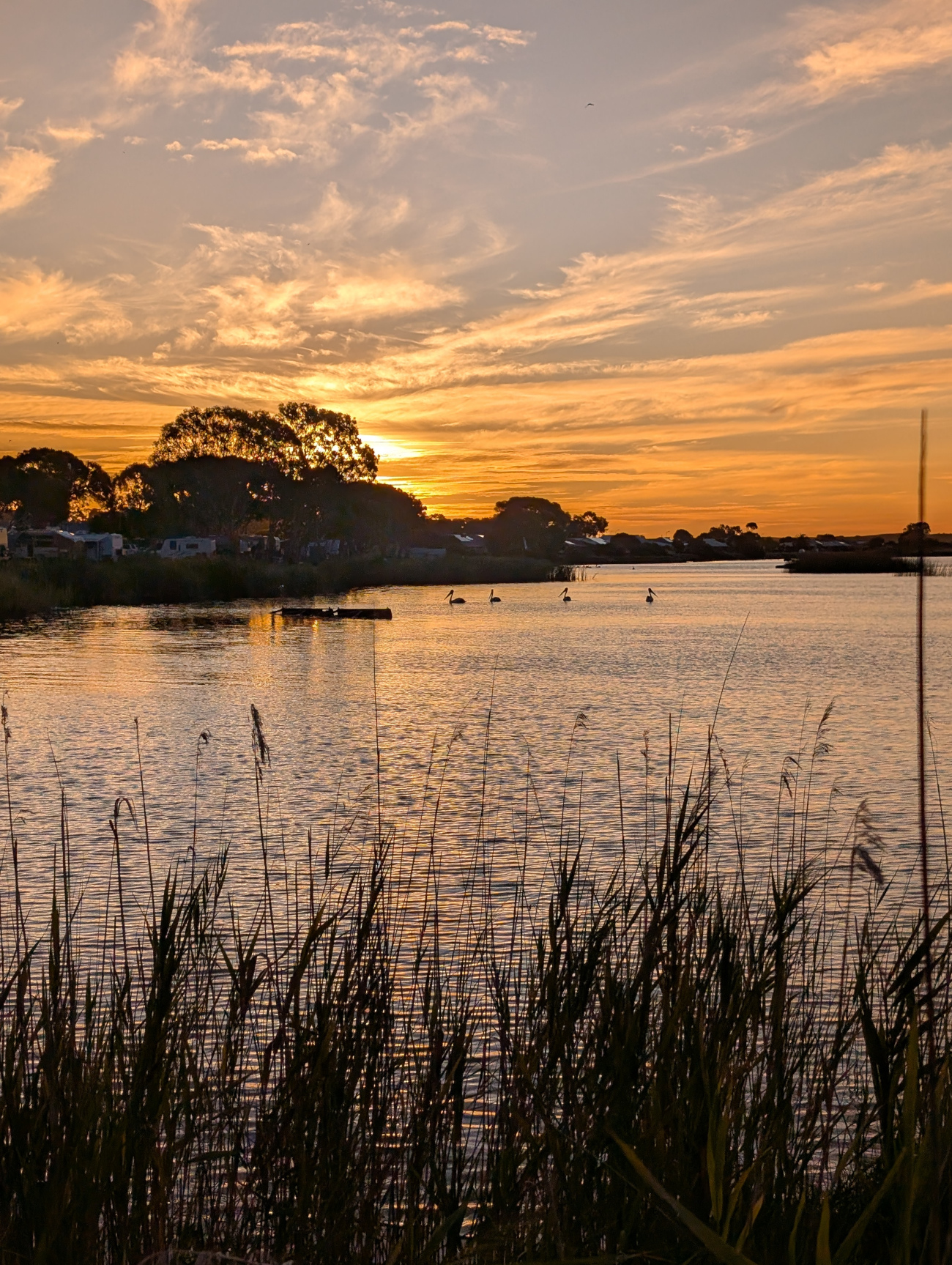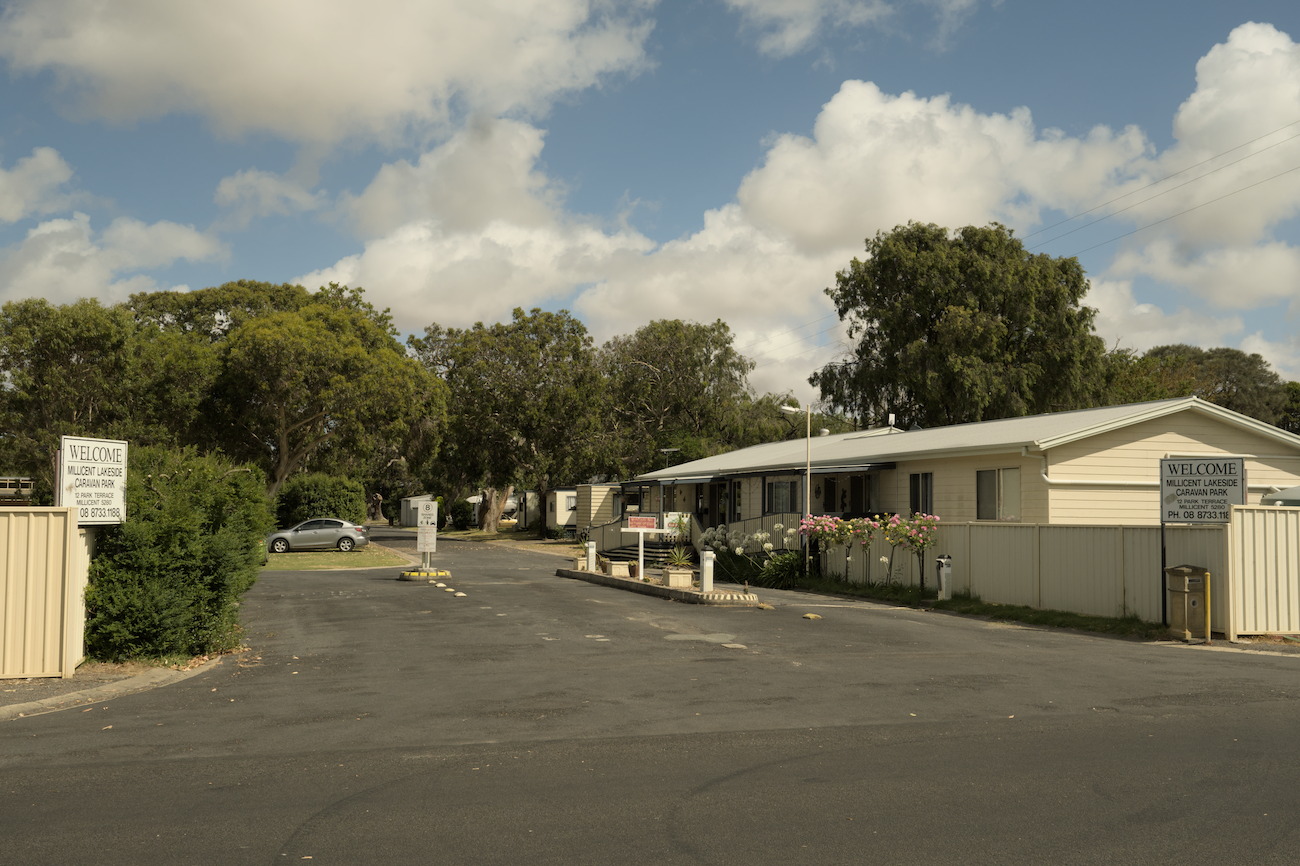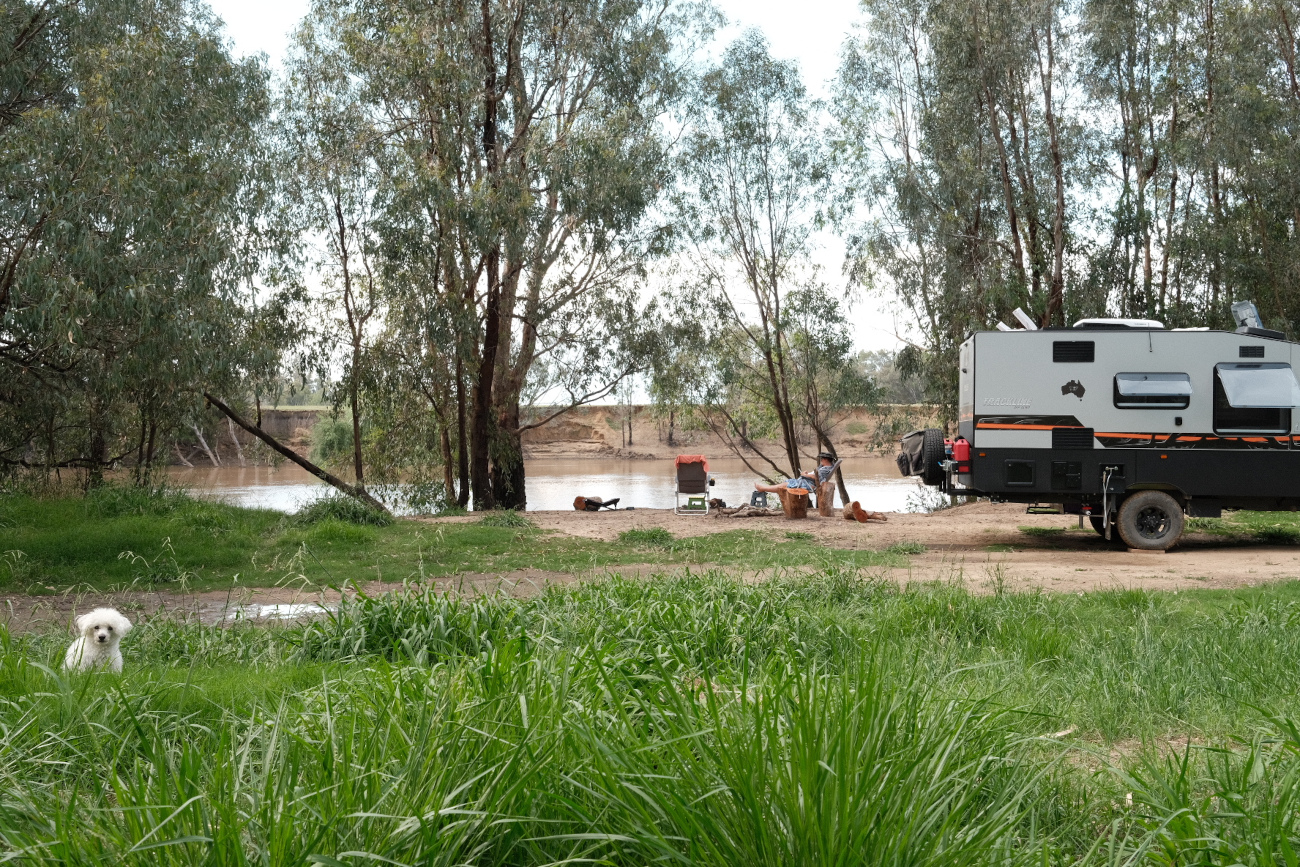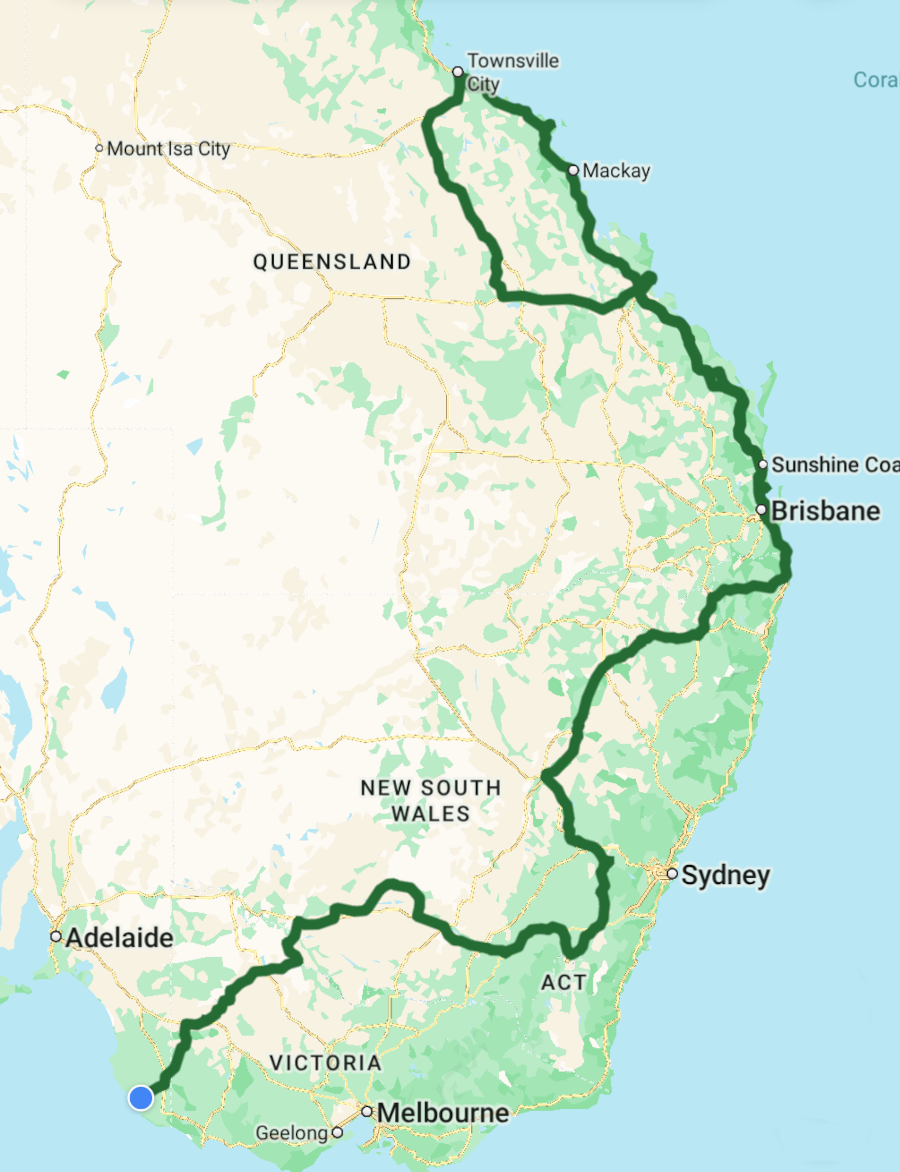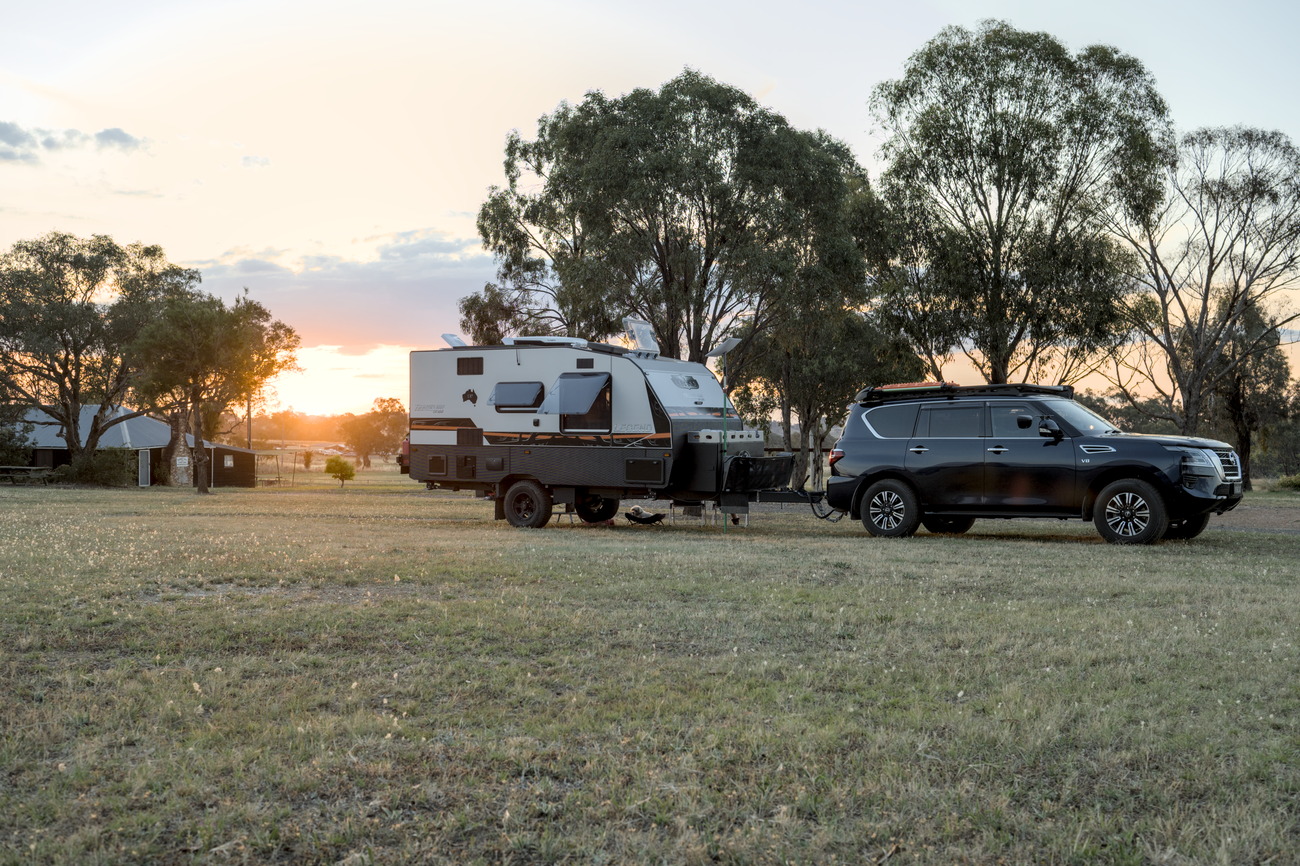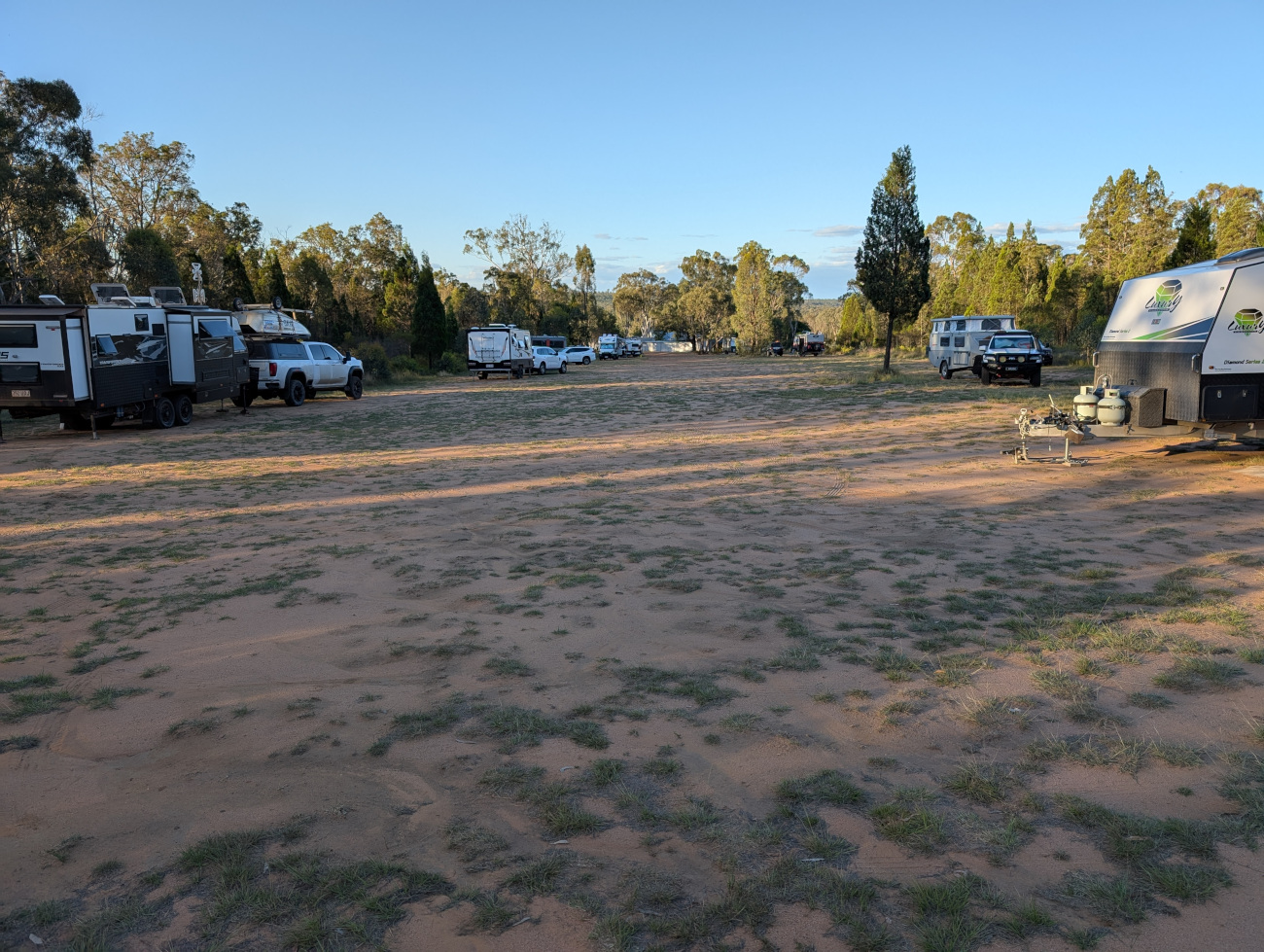This is a good donation camp site to stop at for a few days. You do have to be self contained, but with enough supplies you could stay here for a week. The place felt safe, with some other campers being there for a few days.
- Website: Rotary Park
- Fee Category: Donation
- Booking: No
- Dog Friendly: Yes
- Amenities: No
- Dump point: Yes
- Pool: No
- Fire pits: Yes
- Telstra: Good
- Starlink: May have problems with trees

Our Opinion
This campsite is big, so no need to worry about not being able to find a place to stay. The first part is a gravel type of park and if you want to stay under the trees and closer to the river then keep driving to the left and the track will tack you down to the second section of the campsite. That’s where we stayed. It was hot so we were happy to be shaded by the trees
Enter the park off Rose St, Campaspe Esp, Google sent us to the entrance off Northern Hwy, which we could not find.
If you have the right setup, you could stay here for a few days, especially since there is a dump point on site, which is usually the first problem when camping off grid, the toilet cassette gets full. There is potable water however we didn’t need it and unsure where the tap is located.
The river was not flowing very fast when we where there in March. The caretaker did say the water is from farmland and should be ok to swim in and but up to you. There are fish in the river so I suppose it can’t be that bad.
The have a mini train track at the bottom section with a railway station. This is open the 1st Sun each month from March to December and they ask you not to camp within a certain distance of the tracks. Shame it wasn’t going when we were there. Will have to time it better on our next visit.
You need to register and pay. This is self service. A little tool box on the wall containing pens to complete the form and pop it into a zip lock type bag and shove in the slot.
There was a row of old farm machinery at the top by the grave/dirt track and various other parts around the place. Very relaxing and felt safe and will be back to this awesome donation camp.
We stayed down by the river and would feel safe leaving the caravan there to go exploring. Since we were only doing an over night stop we didn’t disconnect and take a look around town. Save that for next time.




